 My son called me yesterday to ask about a reference to naval battles in the Colosseum. This surprised me a bit because his interest in writing has always focused on science fiction but I was, of course, pleased that he might be interested in a period of history closer to my own heart. I explained to him that yes, such battles were held and how they managed to flood the Colosseum. I was careful to point out, however, that mock naval battles sponsored by Caesar and later, Claudius were obviously not held in the Colosseum since it was not built yet. Then he asked me about a reference in a book he had read (hopefully fiction) that mentioned Nero stocked the flooded Colosseum with crocodiles. I told him that Nero was dead before the Colosseum was even built but that there were ancient sources that described the zoological gardens of Nero’s Golden House as having pools stocked with crocodiles. I then gave him a background on the Great Fire, the construction of the Domus Aurea and the resulting charges of Nero starting the fire to clear space for his palace.
My son called me yesterday to ask about a reference to naval battles in the Colosseum. This surprised me a bit because his interest in writing has always focused on science fiction but I was, of course, pleased that he might be interested in a period of history closer to my own heart. I explained to him that yes, such battles were held and how they managed to flood the Colosseum. I was careful to point out, however, that mock naval battles sponsored by Caesar and later, Claudius were obviously not held in the Colosseum since it was not built yet. Then he asked me about a reference in a book he had read (hopefully fiction) that mentioned Nero stocked the flooded Colosseum with crocodiles. I told him that Nero was dead before the Colosseum was even built but that there were ancient sources that described the zoological gardens of Nero’s Golden House as having pools stocked with crocodiles. I then gave him a background on the Great Fire, the construction of the Domus Aurea and the resulting charges of Nero starting the fire to clear space for his palace.
Later, I was reading my e-mail and one of my news alerts about the Roman Empire brought an article to my attention about the history of spas and bathing which was part of a website of a Spa Manufacturer. Now, normally, you would think that if you are in the business, you would be at least somewhat authoritative about its origins, especially if you were going to post an article about its history. But there it was in bold black and white – the first public Roman bath was built by the Emperor Agrippa (what?!!!) in 25 B.C.. I was a little surprised by the lateness of the date as well so I thought I should check with Lacus Curtius (always a reliable scholarly source) and found the following reference:
It is not recorded at what precise period the use of the warm bath was first introduced amongst the Romans; but we learn from Seneca (l.c.) that Scipio had a warm bath in his villa at Liternum; which, however, was of the simplest kind, consisting of a single chamber, just sufficient for the necessary purposes, and without any pretensions to luxury. It was "small and dark," he says "after the manner of the ancients." Seneca also describes the public baths as obscura et gregali tectorio inducta, and as so simple in their arrangements that the aedile judged of the proper temperature by his hands. These were baths of warm water; but the practice of heating an apartment with warm air by flues placed immediately under it, so as to produce a vapour bath, is stated by Valerius Maximus (ix.1 §1) and by Pliny (Plin. H.N. ix.54 s79) to have been invented by Sergius Orata, who lived in the age of L. Crassus, the orator, before the Marsic war. The expression used by Valerius Maximus is balnea pensilia, and by Pliny balineas pensiles, which is differently explained by different commentators; but a single glance at the plans will be sufficient in order to comprehend the manner in which the flooring of the chambers was suspended over the hollow cells of the hypocaust, called by Vitruvius suspensura caldariorum (v.11), so as to leave no doubt as to the precise meaning of the invention, which is more fully exemplified in the following passage of Ausonius (Mosell. 337):—
"Quid (memorem) quae sulphurea substructa crepidine fumant
Balnea, ferventi cum Mulciber haustus operto,
Vovit anhelatas tectoria per cava flammas,
Inclusum glomerans aestu exspirante vaporem?"
By the time of Cicero, the use of baths, both public and private, of warm water and hot air, had become general (Epist. ad Q. Frat. iii.1); and we learn from one of his orations that there were already baths (balneas Senias) at Rome, which were open to the public upon payment of a small sum (Pro Cael. 25, 26).
The time of Cicero was the first century B.C.E. but an entire generation before Agrippa. I sometimes wonder if cultural icons like the Colosseum, gladiatorial games, and Roman baths are so representative of the Roman culture that authors (and people in general) just naturally assume they were always a part of Roman society so they never bother to check. Now days with the text search capability of the internet and so many scholarly articles on line, it does not take hours of digging through dusty volumes at the library to check out such things but I guess people have to realize the need for accuracy before they will expend even that much effort.
It can happen to scholars as well. I noticed that in the novel The Spartan, Manfredi wrote that Kleidemos (Talos) planned to attend a Persian banquet and was curious to find out how so-called "barbarians" actually lived. This casual comment would seem relatively unimportant unless you know that the usage of the word "barbarian" in ancient Greece only meant someone who did not speak Greek and did not connote crudeness or lack of "civilized" behavior. It appeared to me that Manfredi implied the modern connotation.
 "The so-called Fayoum portraits, more than 1,000 of them, are the largest body of ancient portable paintings to have survived. The use of the word 'Roman portrait' was rejected by British archaeologist Flinders Petrie after his discovery of 300 portraits in excellent condition from a massive cache of mummies in Fayoum in 1888. At once the term 'Fayoum portrait' was coined. This was an acceptable but not accurate term, as they were not to be found in Fayoum alone. The extraordinarily beautiful 2,000-year-old portraits have been found on mummies in Egyptian burial grounds not only in Fayoum but also in 'middle' and Upper Egypt and even on the Mediterranean coast, all dating to between the first and fourth centuries.
"The so-called Fayoum portraits, more than 1,000 of them, are the largest body of ancient portable paintings to have survived. The use of the word 'Roman portrait' was rejected by British archaeologist Flinders Petrie after his discovery of 300 portraits in excellent condition from a massive cache of mummies in Fayoum in 1888. At once the term 'Fayoum portrait' was coined. This was an acceptable but not accurate term, as they were not to be found in Fayoum alone. The extraordinarily beautiful 2,000-year-old portraits have been found on mummies in Egyptian burial grounds not only in Fayoum but also in 'middle' and Upper Egypt and even on the Mediterranean coast, all dating to between the first and fourth centuries.
 By Walter Scheidel of Stanford University
By Walter Scheidel of Stanford University
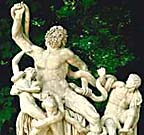 "In spite of the fundamental importance of oaths across an enormously wide range of social interactions throughout the ancient Greek world, there has been very little research dedicated to this topic. This international conference is designed to remedy this omission and to kick off a major project on the theme intended to last several years. More than twenty papers will be presented on many aspects of the oath in Greek-speaking societies in antiquity, including the employment and functions of oaths in political, military, juridical, cultic and wider social contexts, their deployment in literary texts, theoretical discussion of them, and developments in oath practices resulting from Greeks' contacts with other cultural and religious traditions."
"In spite of the fundamental importance of oaths across an enormously wide range of social interactions throughout the ancient Greek world, there has been very little research dedicated to this topic. This international conference is designed to remedy this omission and to kick off a major project on the theme intended to last several years. More than twenty papers will be presented on many aspects of the oath in Greek-speaking societies in antiquity, including the employment and functions of oaths in political, military, juridical, cultic and wider social contexts, their deployment in literary texts, theoretical discussion of them, and developments in oath practices resulting from Greeks' contacts with other cultural and religious traditions."
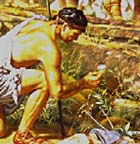 While studying first-hand sources, George Saliba, former chair of the department of Middle East and Asian Languages and Cultures at Columbia University and a researcher studying ancient scientific texts, noticed that when illustrations became so precious in themselves to historians, key sections of the texts were dismissed through the ages and went missing.
While studying first-hand sources, George Saliba, former chair of the department of Middle East and Asian Languages and Cultures at Columbia University and a researcher studying ancient scientific texts, noticed that when illustrations became so precious in themselves to historians, key sections of the texts were dismissed through the ages and went missing.
 "...a new Spartacus will be a tough sell to viewers who know the 1960 film and its strong cast, including Laurence Olivier, Jean Simmons, Charles Laughton and Peter Ustinov in an Oscar-winning performance. The miniseries features Angus MacFadyen in the Olivier role, Rhona Mitra of The Practice in the Simmons part and Alan Bates, who died last month, in his final screen performance.
"...a new Spartacus will be a tough sell to viewers who know the 1960 film and its strong cast, including Laurence Olivier, Jean Simmons, Charles Laughton and Peter Ustinov in an Oscar-winning performance. The miniseries features Angus MacFadyen in the Olivier role, Rhona Mitra of The Practice in the Simmons part and Alan Bates, who died last month, in his final screen performance.
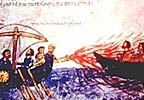 One of my news alerts brought this
One of my news alerts brought this 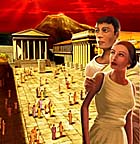 I see Arts & Entertainment Network is jumping into the ancient arena:
I see Arts & Entertainment Network is jumping into the ancient arena:
 I am presently reading Pompeii by Robert Harris and was intrigued by his references to the fish farm activities of the novel’s villain. I was particularly surprised to read about the cultivation of moray eels. I always thought of moray eels as a deepwater species. I found this wonderful extensive article on Roman aquaculture by Kirk Johnson including specific information about their cultivation of eels:
I am presently reading Pompeii by Robert Harris and was intrigued by his references to the fish farm activities of the novel’s villain. I was particularly surprised to read about the cultivation of moray eels. I always thought of moray eels as a deepwater species. I found this wonderful extensive article on Roman aquaculture by Kirk Johnson including specific information about their cultivation of eels:
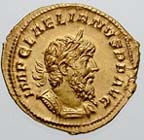 "Laelianus shared the same nomen as a prominent Spanish noble family, the Ulpii, that included Trajan among its members, and may have been a relative.
"Laelianus shared the same nomen as a prominent Spanish noble family, the Ulpii, that included Trajan among its members, and may have been a relative. 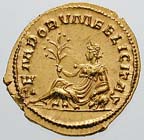 This is supported by the strong allusion to Spain on an aureus he struck, which featured the design of Hispania reclining with a rabbit to her side. If he indeed was a relative, this may be the reason Spain allied itself with Claudius II, after the death of Postumus, seemingly without a struggle.
This is supported by the strong allusion to Spain on an aureus he struck, which featured the design of Hispania reclining with a rabbit to her side. If he indeed was a relative, this may be the reason Spain allied itself with Claudius II, after the death of Postumus, seemingly without a struggle.
 "When Tiberius and his successors followed in general Augustus' advice of confining the empire within its present frontiers (Tac. Ann. 1.11.7), one of the principal sources of slaves i.e. prisoners of war, seriously decreased. However, as far as we are aware, no major emergency in the replenishment of slave numbers occurred. The reason surely is that the considerable range of other slave sources already available were together able to make up sufficiently for the shortfall. Yet, of these sources, only two, vernae and foundlings, could, we are convinced, have been major contributors. Vernae certainly were important, yet, if the arguments and estimates given above are sound, vernae would have fallen well short of supplying the full yearly requirement. That leaves foundlings. Since we know that child exposure was a widespread phenomenon - urban as well as rural - over a considerable section of the Greek world, Asia Minor, Egypt, Italy and elsewhere in the West, we may conclude that enslaved foundlings were more or less able to make up for the shortage in the slave supply caused by the drop in the numbers of prisoners of war in the first century and a half of the empire - a shortage which vernae and the other sources could not offset. "
"When Tiberius and his successors followed in general Augustus' advice of confining the empire within its present frontiers (Tac. Ann. 1.11.7), one of the principal sources of slaves i.e. prisoners of war, seriously decreased. However, as far as we are aware, no major emergency in the replenishment of slave numbers occurred. The reason surely is that the considerable range of other slave sources already available were together able to make up sufficiently for the shortfall. Yet, of these sources, only two, vernae and foundlings, could, we are convinced, have been major contributors. Vernae certainly were important, yet, if the arguments and estimates given above are sound, vernae would have fallen well short of supplying the full yearly requirement. That leaves foundlings. Since we know that child exposure was a widespread phenomenon - urban as well as rural - over a considerable section of the Greek world, Asia Minor, Egypt, Italy and elsewhere in the West, we may conclude that enslaved foundlings were more or less able to make up for the shortage in the slave supply caused by the drop in the numbers of prisoners of war in the first century and a half of the empire - a shortage which vernae and the other sources could not offset. "